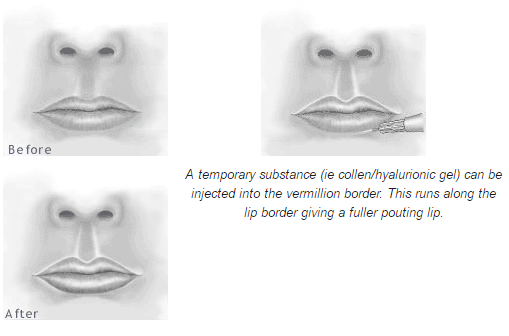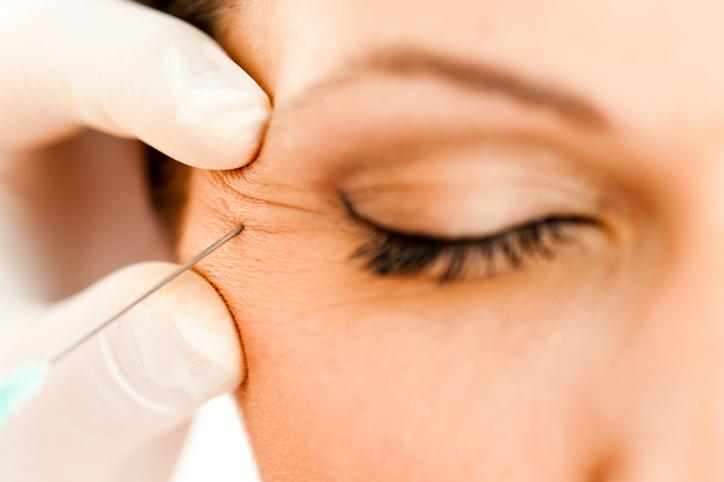Lip enhancement
Peer reviewed by The British Association of Plastic Surgeons (BAAPS)Authored by The British Association of Plastic Surgeons (BAAPS)Originally published 23 Mar 2016
Meets Patient’s editorial guidelines
- DownloadDownload
- Share
- Language
- Discussion
In this series:Botox
This page has been archived.
It has not been reviewed recently and is not up to date. External links and references may no longer work.
This leaflet is provided by the British Association of Aesthetic Plastic Surgeons, the professional body responsible for the advancement of education and safety in aesthetic plastic surgery.
In this article:
This is suitable for anyone who would like larger or fuller lips. In addition there are people who were born with abnormalities of the lips or whose lips have become deformed for one reason or another in later life.
Continue reading below
Procedures available
There are a large number of different procedures to choose from but they can be grouped together.
Temporary enhancement
Many substances have been used to temporarily enlarge the lips. These substances are primarily injected under the white line. That is the white hair-free line which outlines the vermillion (red mucosa) of the lip and is distinct from normal lip skin. This gives a pouting (Paris) lip. (See diagram below). The bulk of the lip can be increased by injections into the muscle but these tend to dissolve at a faster rate. The commonest material used is collagen for which an allergy test is required. Recently hyaluronic acid gel (Hylaform®, Restylane®) has been used. All these dissolving substances need to be topped up every 3 to 6 months.
Fat injection
This is usually considered to be temporary. It has the advantage that one is using the patient's own tissue and therefore there will be no allergic reaction. The fat is collected either as part of some other liposuction procedure or harvested specifically for the purpose of augmentation of the lips. Usually it is taken from the abdomen or buttocks. It can be stored in the fridge for later use for many months. Injection of fat does cause more temporary swelling (bee sting lips) than the injection of other substances.
Lip enhancement

Continue reading below
Permanent lip enlargement using the patient's own tissue
Dermis, or the deeper layers of the skin, has been used as a graft for many years, but recently has become popular for lip enhancement. The tissue is harvested as a by-product of some other operation where it would otherwise be discarded - eg abdominal reduction, breast reduction, facelift, etc. The epidermis or outer skin is removed and the shaped dermis threaded through from one side of lip to the other. The advantage is that this tissue takes well as a graft because it is the patient's own tissue, therefore there will be no problems of allergy. The graft may not take fully and there will be some thinning of the dermis with age. However, good results can be achieved. It is a bigger procedure, producing more swelling for longer (one to three weeks) and can also create complications of infection and bleeding, as in any operation. An alternative graft to dermis is fascia (the covering of muscle). This can be the temporalis fascia from the covering of the temporalis muscle under the scalp at the temple, or from elsewhere. Lip enhancement by injection or graft is limited by the amount of vermillion or mucosa of the lip that is available. Some older people have very limited amounts of vermillion.
Surgical advancement of the vermillion
The mucosa of the inner side of the lip can be advanced downwards to make a fuller lip or even advanced downwards and round to replace normal skin. This last operation will however destroy the normal white line. These reconstructive procedures tend to be used to treat congenital deformities and those acquired through injury or disease.
Continue reading below
Which procedure is the best?
There are many procedures that can be used to enhance the lips. Some patients prefer temporary ones as they can change their minds. They may also wish just to try the appearance of larger lips as a preliminary to something more permanent. Many patients and surgeons will prefer to use the patient's own tissue, although the injections are simpler. The choice will depend very much on the patient's wishes and the surgeon's experience.
Content used with permission from the British Association of Aesthetic Plastic Surgeons website: Lip enhancement. Copyright for this leaflet is with the BAAPS.
Disclaimer
This leaflet is designed to supply useful information but is not to be regarded as advice specific to any particular case. It does not replace the need for a thorough consultation and all prospective patients should seek the advice of a suitably qualified medical practitioner. The BAAPS accepts no liability for any decision taken by the reader in respect of the treatment they decide to undertake.
Patient picks for Cosmetic surgery

Surgery and procedures
Botox
This leaflet is provided by the British Association of Aesthetic Plastic Surgeons, the professional body responsible for the advancement of education and safety in aesthetic plastic surgery.
by Dr Hayley Willacy, FRCGP

Surgery and procedures
Breast augmentation
This leaflet is provided by the British Association of Aesthetic Plastic Surgeons, the professional body responsible for the advancement of education and safety in aesthetic plastic surgery.
by The British Association of Plastic Surgeons (BAAPS)
Continue reading below
Article history
The information on this page is written and peer reviewed by qualified clinicians.
23 Mar 2016 | Originally published
Authored by:
The British Association of Plastic Surgeons (BAAPS)Peer reviewed by
The British Association of Plastic Surgeons (BAAPS)

Ask, share, connect.
Browse discussions, ask questions, and share experiences across hundreds of health topics.

Feeling unwell?
Assess your symptoms online for free
Sign up to the Patient newsletter
Your weekly dose of clear, trustworthy health advice - written to help you feel informed, confident and in control.
By subscribing you accept our Privacy Policy. You can unsubscribe at any time. We never sell your data.